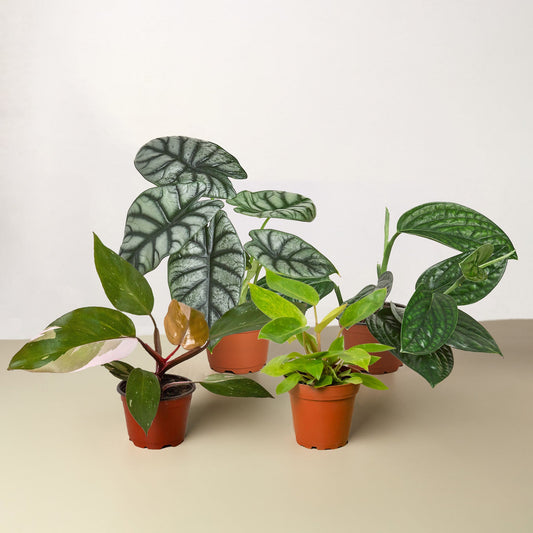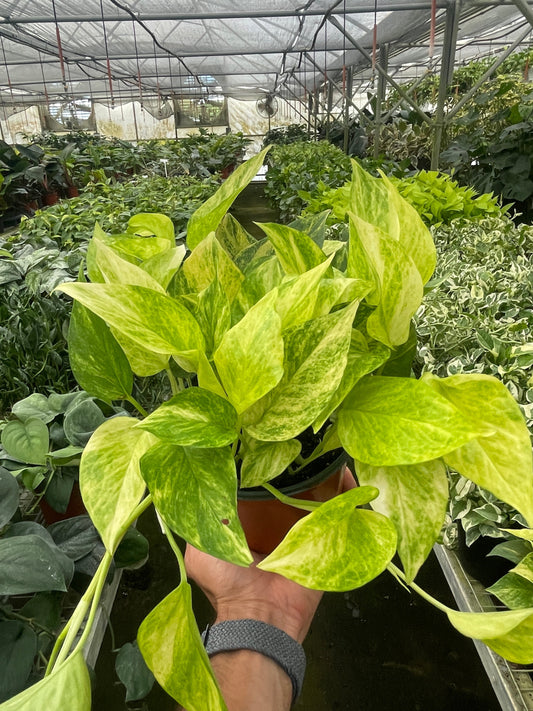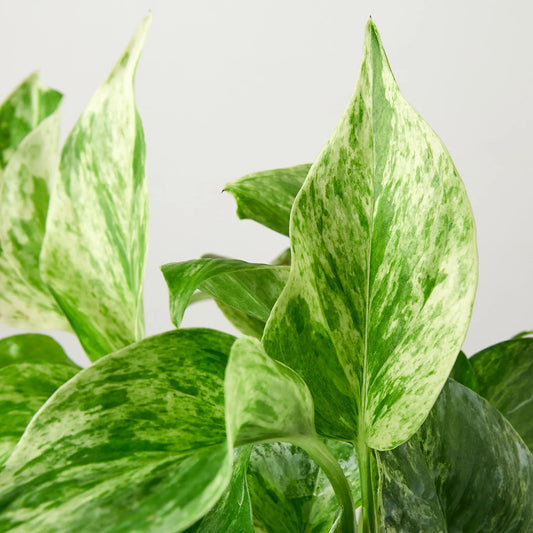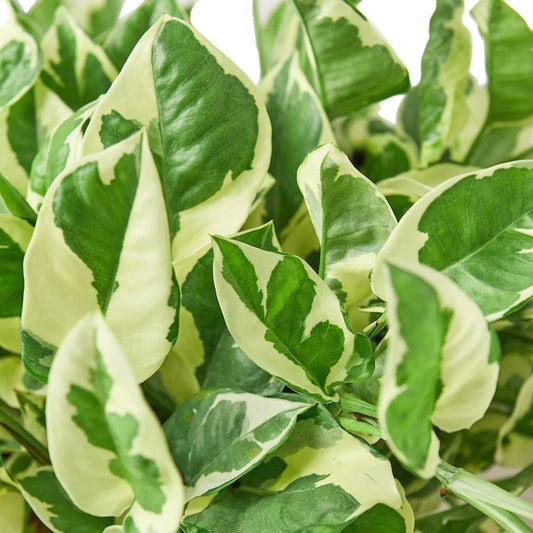Monstera Epipremnoides Aerial Roots: Everything You Need to Know
Cafe Planta Team
Monstera Epipremnoides is a fascinating plant that has captured the hearts of many plant people, thanks to its striking leaves and intriguing aerial roots. If you're a plant lover who's curious about these roots or you're looking to improve the care of your Monstera Epipremnoides, you've come to the right place.
In this article, we'll explore everything you need to know about Monstera Epipremnoides aerial roots. We'll cover what they are, why they matter, how to care for them, and how they can fit into your home’s decor. So, whether you're a seasoned plant parent or a newcomer, let's dive into the world of aerial roots together!
What Are Aerial Roots?
Aerial roots are a unique feature of many tropical plants, including the Monstera Epipremnoides. Unlike the roots you typically find underground, these roots grow above the soil. They're not just for show, though—they serve several essential functions for the plant.
Think of aerial roots as the plant’s way of anchoring itself in its natural environment. In the wild, Monstera plants use these roots to cling to trees and climb towards the light. This evolution helps them reach sunlight in dense forests where direct light is scarce. Aerial roots also absorb moisture and nutrients from the air and surrounding surfaces, providing an additional source of nourishment.
So, when you see those intriguing, tentacle-like roots sprouting from your Monstera, know that they’re doing their job to support the plant. They might look a bit wild, but they’re an essential part of the plant’s survival strategy.
The Role of Aerial Roots in Plant Health
Now, you might be wondering how these roots contribute to the overall health of your Monstera Epipremnoides. Well, they play a significant role! Here’s why:
- Support: Aerial roots provide structural support, helping the plant climb and stabilize itself as it grows.
- Nutrient Absorption: They can absorb water and nutrients directly from the air or any surface they come into contact with, supplementing what the plant gets from the soil.
- Humidity Regulation: These roots can help the plant manage humidity levels, which is crucial for tropical plants like Monstera.
In essence, aerial roots are the Swiss Army knife of plant roots. They help ensure that the plant remains healthy and vigorous, even if conditions aren’t perfect. This adaptability is one reason why Monstera Epipremnoides is such a resilient and popular houseplant.
How to Care for Aerial Roots
Taking care of aerial roots is not as daunting as it might seem. Here are some practical tips to keep them healthy and thriving:
Watering and Humidity
While Monstera plants are quite adaptable, they love humidity. Aerial roots, in particular, thrive in moist environments. You can mist them regularly or use a humidifier to maintain the right moisture levels. Just be cautious not to overwater, as too much moisture can lead to rot.
Trimming and Maintenance
Sometimes, aerial roots can grow quite long and might become unwieldy. It’s perfectly fine to trim them if they’re getting out of hand. Use clean, sharp scissors to make a clean cut and avoid damaging the plant. Don’t worry—trimming won’t harm the plant, and it can often promote healthier growth.
Training and Support
If you prefer a tidier look, you can train the aerial roots to grow along a moss pole or trellis. This not only supports the plant but can also add an interesting vertical element to your indoor garden.
Propagation Using Aerial Roots
If you’re a fan of propagating plants, you’re in luck! Aerial roots can be a useful tool in the propagation process. Here’s how you can use them to grow new Monstera Epipremnoides plants:
Choosing the Right Stem
Look for a healthy stem with a few leaves and aerial roots. The presence of aerial roots increases the chances of successful propagation since they can transition into soil roots.
Cutting and Preparing
Use a clean, sharp knife or scissors to cut the stem just below a node with aerial roots. Make sure the cutting is healthy and not damaged.
Rooting in Water or Soil
You can root the cutting in water first or plant it directly into soil. If rooting in water, change the water regularly to prevent stagnation. Once roots have developed, transfer the cutting to soil.
If planting directly in soil, ensure it’s well-draining and keep it moist but not waterlogged. In a few weeks, you should see new growth emerging, indicating a successful propagation.
Using Aerial Roots in Interior Design
Monstera Epipremnoides is not just a plant—it’s a living piece of art. Those aerial roots, with their unusual appearance, can add a touch of jungle-like charm to your home decor. Here’s how you can incorporate them into your interior design:
Creating Vertical Interest
By using a moss pole or trellis, you can encourage your Monstera to climb, which showcases its aerial roots beautifully. This creates a striking vertical element in any room, drawing the eye upward and adding a sense of height.
Natural Room Divider
If you have an open-plan space, a large Monstera with prominent aerial roots can serve as a natural room divider. It adds privacy without the need for solid partitions, maintaining an open and airy feel.
Pairing with Other Plants
Aerial roots can complement other plants in your collection. Pair your Monstera with trailing plants like pothos or philodendrons for a lush, layered effect. The contrast between the climbing Monstera and the cascading vines creates a dynamic and visually appealing display.
Common Issues with Aerial Roots
While aerial roots are generally low-maintenance, they can sometimes encounter problems. Here’s how to tackle some common issues:
Root Rot
If aerial roots are constantly wet, they can suffer from root rot. Make sure to allow the roots to dry out between misting sessions and avoid waterlogging the plant. If you notice any signs of rot, trim the affected roots with sterilized scissors.
Pests
Pests like spider mites or mealybugs can occasionally find their way onto aerial roots. Regularly inspect your plant and use a gentle insecticidal soap or neem oil to treat infestations. Keeping your plant clean and healthy can prevent pest problems before they start.
Dryness
If your home’s air is too dry, aerial roots might become brittle. Increasing humidity around the plant can help, as can regular misting. Consider relocating your Monstera to a more humid environment if dryness persists.
Do You Need to Bury Aerial Roots?
It’s a question many plant parents ask: should you bury aerial roots in the soil? The short answer is, you don’t have to. Here’s why:
Aerial roots are designed to function above ground. Burying them won’t necessarily harm the plant, but it’s not required for their health. In fact, keeping them above ground allows them to perform their natural functions of support and moisture absorption.
If you find the appearance of aerial roots disruptive, you can gently tuck them into the soil. Just make sure not to damage them in the process, as they’re quite delicate. Whether you choose to bury them or let them roam free, your Monstera will continue to thrive.
Benefits of Embracing Aerial Roots
Embracing the natural growth of aerial roots can be incredibly rewarding. Here’s why you should welcome these quirky appendages:
- Natural Beauty: Aerial roots add a wild and natural aesthetic to your indoor garden, bringing a slice of the jungle into your home.
- Conversation Starter: They’re unique and intriguing, often sparking curiosity among guests and fellow plant people.
- Plant Health: By allowing them to grow naturally, you’re supporting the overall health and vitality of your Monstera.
So, instead of trimming them back or hiding them away, consider letting them be a part of your plant’s natural beauty. They’re a testament to the incredible adaptability and resilience of plants.
Final Thoughts
Monstera Epipremnoides aerial roots are more than just an interesting feature—they're an integral part of the plant's health and aesthetic appeal. By understanding their role and how to care for them, you can help your Monstera thrive and add a striking element to your home decor.
At Cafe Planta, we're passionate about helping you care for your plants. Whether you're looking for plant care tips or unique houseplants, we're here to support you. Feel free to reach out to us via email or connect with us on Instagram. We believe in the power of plants to bring people together and connect with nature, and we're excited to be part of your plant journey.



















